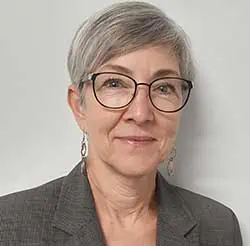

This year’s National Brownfields Conference in Detroit, Michigan, was notable. The evening before the conference began, the United States Environmental Protection Agency (USEPA) hosted an ‘Environmental Justice’ caucus in which over 150 people from both the public and private sectors came together to learn more about what Environmental Justice is and how it informs our work in economic development efforts.
USEPA defines Environmental Justice (often called ‘EJ’) as “the fair treatment and meaningful involvement of all people regardless of race, color, national origin, or income, with respect to the development, implementation, and enforcement of environmental laws, regulations, and policies.” We’ll achieve this goal when everyone enjoys the same degree of protection from environmental and health hazards and equal access to the decision-making process to have a healthy environment to live, learn, and work.
Distilled to its core, EJ is a call to action for all individuals and entities engaged in helping sustain and grow their communities. It posits that multiple demographics (including but not limited to people of color, inhabitants of rural areas, and people with less access to education and well-paying jobs) are disproportionately subject to harmful impacts from exposure to toxins and pollutants. Accordingly, it is incumbent upon those engaged with those populations to pay heed to find ways to mitigate or reduce those exposures.
EPA formally established the Office of Environmental Justice and External Civil Rights on October 6, 2022, and since that time, has engaged over 200 people across the agency to perform tasks specifically addressing EJ, including “processing grant applications from communities with environmental justice concerns, reaching out to residents to understand their concerns, and enforcing civil rights.” The EPA also established the Environmental Justice Thriving Communities Grantmaking (EJ TCGM) program in direct response to two Executive Orders issued by the Biden administration (EO 14008 and 13985) and will soon award ~$550 million to 11 distinct entities (which must be community-based nonprofits or partnerships between community-based nonprofits and either Tribal government or institutions of higher education) to spearhead more inclusive and easily accessible resources/support for communities seeking EPA funding to address EJ concerns.
EPA also established 16 technical assistance centers across the nation under the EJ Thriving Communities Technical Assistance Centers Program (EJ TCTAC), aimed at “providing technical assistance, training, and related support to communities with environmental justice concerns and their partners. The services provided will include training and assistance on writing grant proposals, navigating federal systems such as Grants.gov and SAM.gov, effectively managing grant funds, community engagement, meeting facilitation, and translation and interpretation services for limited English-speaking participants.”
Furthermore, the 2022 Inflation Reduction Act created the Environmental and Climate Justice Block Grant program in section 138 of the Clean Air Act (CAA). It provided EPA with $2.8 billion in grant funding for the program for projects to benefit communities with environmental justice concerns.
All told billions of dollars are currently available to communities that seek to spur environmental cleanup and revitalization efforts. SCS specializes in helping communities connect with this funding (even providing in-house Brownfields grant writing services) and has a proven track record of forming successful partnerships which result in timely and meaningful rejuvenation projects.
Two of the projects SCS teamed on this past year are awardees of the EPA’s prestigious 2023 Phoenix Award. The first of such projects, performed in EPA Region 6, involved the restoration of the historic First National Bank Building in downtown Oklahoma City, OK. This project created a mixed-use space, including apartments in the heart of the bustling business district, to help revive a struggling downtown and create jobs for residents. The second project, performed in EPA Region 9, provided affordable housing in San Diego, CA, and included upgrades to storm drains, water and sewer lines, underground powerlines, and streetscape improvements, significantly enhancing area infrastructure.
In both these projects and countless other projects performed under federal and state Brownfields programs, SCS is a trusted partner providing technical expertise and conscientious approaches to community engagement and planning that align with EJ protocols. SCS is a Foundational Member and Advisor of the Center for Creative Land Recycling (CCLR), which aims to turn abandoned land into thriving spaces that serve communities meaningfully.
This year’s Brownfields Conference theme was “Sustainable Communities Start Here,” in sync with SCS’s long culture and mission of achieving sustainability through holistic processes. The most successful remediation projects are when all stakeholders have a voice and redevelopment efforts are thoughtfully, creatively, and deliberately planned and implemented.
Additional Resources:

Meet SCS Engineers professionals at the National Carbon Capture Conference & Expo, November 7-8, at the Iowa Events Center in Des Moines.
The conference is produced by Carbon Capture Magazine to advance technology and policy within the carbon capture, utilization, & storage industry.
 Hear from SCS Senior Project Professional, Candy Elliott, presenting
Hear from SCS Senior Project Professional, Candy Elliott, presentingAbstract: A critical part of any Carbon Capture and Sequestration (CCS) project is identifying and addressing Environmental Justice concerns. Class VI well permit applications require an Environmental Justice Review, yet there is little guidance on structure and content. While data and data sources are plentiful, a systematic approach to synthesizing and presenting those data has yet to be established. Consistently, questions arise including: Which demographic information is applicable to the project? How do we present and compare data? How will the project affect current environmental concerns for the project area? How do we identify stakeholders and, once identified, how do we perform effective outreach? This presentation will provide both an overview of the EJ review process and examples of targeted, effective community outreach implemented in pending Class VI permit applications. Using these proven techniques can help achieve your permitting and construction goals while supporting your community.
We hope to see you there! Early Bird registration ends October 18.
Podcast Preview
Meet SCS Engineers Environmental Professionals at the AEHS Foundation’s 39th Annual Conference on Soils, Sediments, Water, and Energy, October 16-19, in Amherst, Massachusetts.
This is AEHS’s “East Coast” environmental conference, and it brings together some 600-800 participants with diverse backgrounds, including representatives from state and federal agencies, environmental engineering firms, consulting companies, industry leaders, and esteemed academia — truly a gathering of the best and brightest minds in the field.
The conference delivers a robust and varied technical program with presentations on cutting-edge research, innovative approaches, and practical insights. The conference offers participants the opportunity to be part of a vibrant community dedicated to developing creative, cost-effective assessments and solutions to meet regulatory demands, shape a sustainable future, and make a lasting impact in the environmental field.
The Association for Environmental Health and Sciences Foundation, Inc. (AEHS) is a non-profit, member-supported, professional organization, with the purpose of facilitating communication and fostering cooperation among professionals concerned with the challenge of soil, sediment, and water assessment, cleanup, and protection.
We hope to see you there! For more conference details and registration information, click here

Environmental justice is integrated into State and Federal environmental agency policy-making, thus impacting inspections and enforcement across the nation. While specifics are evolving quickly in each state, staying abreast of these basic requirements for the key environmental permits and plans listed here is best, especially if you have multiple facilities in multiple states.
We recommend this quick read to run through a checklist to decide if your facility is ready or may need an internal audit. For this article, we’re using Illinois and standard Federal requirements.
Being well-prepared for an inspection saves time and expense but will also support your company’s relationship with the regulatory agency and promote better outcomes and reduced risk of enforcement actions.
Deficiencies noted during an inspection can be a catalyst for additional inspections among non-EJ-located facilities.
Manufacturers in environmental justice areas denoted within each state can prepare for regulatory review and inspection by conducting internal or external audits of key environmental permits and plans to evaluate compliance with state and local regulations.
Additional Information:

Please stop by our booth to discuss the various land recycling possibilities for your site, funding, and permitting. We are exceptionally proud of our relationship with CCLR, and our clients who are winning Phoenix, EBJ, and other awards for their valuable contributions to their communities.

Tuesday, September 26th at 3:15 PM in the Community Hall Section A
With numerous approaches and examples of pilot studies, innovative technologies, and work done to execute alternatives to excavation, this session will help you overcome the practical challenges of sustainable remediation. With an overview of conducting pilot tests and examples of innovative technologies, this session will help project managers and site owners take the next steps in bringing innovative sustainable solutions to clean up contaminated sites and answer the question, can in-situ technologies be used to avoid costly excavation and disposal?

Wednesday, September 27th at 10:30 am in the Community Hall Section A
We aim to get your remediation or brownfields project done sustainably, meeting economic and environmental goals such as the mission of the Water Boards to preserve the quality of California’s water resources and drinking water to protect the environment, public health, and beneficial uses. Join Jim and company to learn the best practices.
The U.S. Environmental Protection Agency (EPA) Region 9 and the CA Department of Toxic Substances Control’s (DTSC) Office of Brownfields are co-collaborators of this conference.
Join SCS Engineers professionals at the 2023 Annual Florida Brownfields Conference, June 19-21, at Avanti International Resort in Orlando, Florida.
The Florida Brownfields Conference always brings great information from industry experts. The Call for Abstracts was extended through Friday, May 19. Organizers are seeking presentations on
Registration is now open. For registration information and more details as the conference takes shape, click here.
Hope to see you there!
Visit SCS Engineers professionals at BOOTH 60 at the 2023 Louisiana Environmental Conference and Trade Fair, March 15-17, at the Cajundome & Convention Center in Lafayette, Louisiana.
The conference will feature many presentations and opportunities to learn from industry experts, as well as several networking opportunities including a golf outing, opening reception, and crawfish boil and fish fry.
The conference is hosted by the Louisiana Solid Waste Association.
Meet SCS Engineers professionals at the A&WMA/ASME Waste Information Exchange, April 11-12, 2023, at the Doubletree Hilton Washington DC-Crystal City Hotel, in Arlington, Virginia.
This conference will cover the latest on a broad range of waste-related topics including regulations and research in an interactive, discussion-focused format. This is an excellent learning and networking opportunity to hear directly from experts at EPA, NGOs, industry, and academia who are working together to develop solutions to creating a cleaner and healthier environment. The technical program will cover policy updates and regulatory changes, as well as current and late-breaking research on hot topics such as:
• Solid Waste
• Biosolids
• Landfill Issues and Greenhouse Gas Emissions Monitoring
• Reuse/Recycling
• Resource Management
• Waste-to-Energy
• PFAS Emissions and Controls
• Environmental Justice
• RCRA Requirements for Open Burning
Managers, practitioners, policymakers, and researchers involved in waste management, public works, operations, maintenance, manufacturing, transportation, technology, compliance, collections, and other environmental roles will benefit from the technical content and networking available at this conference.
Sponsorship and display opportunities are available at this conference! Discover how your company can maximize exposure, generate leads, and support the industry.
Visit www.awma.org/waste for registration information and evolving conference details.
SCS Engineers is a proud Gold Level Sponsor of the 2023 National Brownfields Training Conference taking place August 8-11, 2023, at the Huntington Place Convention Center in Detroit. Visit us at BOOTH 108 and talk with our experts about your brownfield challenges.
The National Brownfields Training Conference brings together stakeholders from government, industry, and the community to share knowledge and best practices on the remediation and redevelopment of contaminated properties, known as brownfields. The conference features a range of sessions, workshops, and networking events that cover topics such as financing, liability, and community engagement, with the goal of promoting the cleanup and revitalization of contaminated sites across the United States. This year will feature seven new tracks to explore the evolving brownfields landscape with topics like Housing, Equity, and Minimizing Displacement, Environmental Justice and Public Participation, and Assessment and Cleanup Approaches.
2023 is the year to take your community to the next level with unprecedented financial and technical resources. The Bipartisan Infrastructure Law included an unprecedented $1.5 billion investment in EPA’s highly successful Brownfields Program. Learn more.
Brownfields 2023 is the premier event to learn how you can access these grants and maximize your economic, environmental, and social performance. This funding will transform communities into sustainable and environmentally just places, enhance climate resiliency, and more.
The National Brownfields Training Conference is the largest event in the nation focused on environmental revitalization and economic redevelopment. It is hosted by the US EPA and the International City/County Management Association (ICMA). The Conference attracts over 2,000 stakeholders in brownfields redevelopment and cleanup to share knowledge about sustainable reuse and celebrate the EPA brownfields program’s success. Whether you’re a newcomer or a seasoned professional, Brownfields 2023 offers something for you!
Click for program and registration information.
Illinois EPA Environmental Justice Procedures
The Illinois EPA Bureau of Air recently implemented more stringent procedures for securing an air permit for a new emissions source or emissions unit when the operations are located in, or within a mile of, an Environmental Justice area. How long the new procedures will remain in effect is not known, but any increase in air emissions will subject the project to more extensive review by the Illinois EPA and possibly the United States Environmental Protection Agency (USEPA) Region V, which could extend the permit application review by a substantial amount of time. Depending on the location of the source, the type and amount of the pollutant(s) being emitted, and the amount of interest or objection by interested parties, there is also a chance that the permit may not be approved. Interested parties include, but are not limited to, local activists, local government agencies, neighboring citizens, and other entities with an interest in Environmental Justice (EJ).
Assuming a permit with a net increase in emissions is approved, it will likely include the following elements.
Illinois EPA is recommending that a company seeking to construct and operate a new or modified source, or add a new emissions unit to an existing source, identify ways within the plant to lower air emissions of the applicable air contaminant(s) such that the project will not result in a net emissions increase. Illinois EPA is not expecting a source to conduct a formal netting exercise, but instead suggests considering product substitutions such as alternative cleaning solutions with low or no volatile organic material (VOM) or hazardous air pollutants (HAPs); for instance, a mixture of acetone and water, or detergents. Other approaches may include the installation of add-on pollution control equipment, use of cleaning solutions with low vapor pressures which evaporate more slowly, capturing some of the VOM in shop towels and cleaning rags rather than emitting them to the atmosphere, installation of recovery equipment (e.g., distillation equipment), and considering other raw material substitutions or equipment replacements.
When an air permit application is submitted to the Illinois EPA for a proposed project that does not result in a net emissions increase, the application will be processed by the permitting department, and then a draft permit will be forwarded to the EJ group at Illinois EPA. The EJ group will forward a copy of the draft permit to interested parties specific to that EJ area. If no comments are received within two weeks, the permitting group will issue a draft permit to the permittee for review and comments. Any substantive comments received from interested parties will be addressed by the Illinois EPA, and this process could cause delays, particularly if a public hearing is requested and granted.
Environmental Justice Background
The USEPA defines environmental justice as “the fair treatment and meaningful involvement of all people regardless of race, color, national origin, or income, with respect to the development, implementation, and enforcement of environmental laws, regulations, and policies.” Environmental justice was originally established by Title VI of the Civil Rights Act of 1964, which prohibits recipients of federal financial assistance (states, grantees, etc.) from discriminating against these populations in any program or activity. The scope of Title VI was expanded by Executive Order 12898 by President Clinton on February 11, 1994. Executive Order 12898 was issued to direct federal agencies to incorporate achieving EJ into their mission, and to identify and address, as appropriate, disproportionally high adverse human health and environmental effects of their programs, policies, and activities on minority and low-income populations. More recently, President Biden issued Executive Order 14008 Tackling the Climate Crisis at Home and Abroad on January 27, 2021.
Illinois EPA has adopted policies and procedures to conform to Title VI of the Act and Executive Orders 12898 and 14008. According to Illinois EPA, “environmental justice is the protection of the health of the people of Illinois and its environment, equity in the administration of the State’s environmental programs, and the provision of adequate opportunities for meaningful involvement of all people with respect to the development, implementation, and enforcement of environmental laws, regulations, and policies.”
EJ areas in Illinois are derived from US Census Block Groups where the population consists of a substantial amount of minorities and/or the area is heavily populated by persons and families living below the poverty line. Further information on how EJ areas are established can be found at Illinois EPA EJ Start (arcgis.com), which also includes a map identifying all EJ areas in the state.

For more information or assistance with identifying ways to lower air emissions or help with maneuvering through the air permitting process at Illinois EPA, contact Ann O’Brien () in Chicago, IL, or Cheryl Moran () in Milwaukee, WI. For assitance in other states please contact .